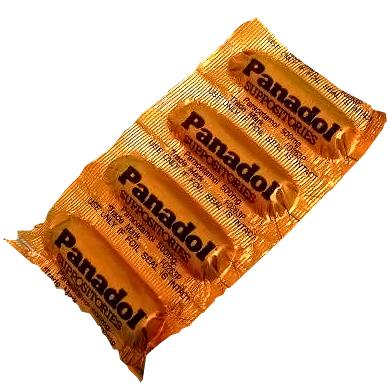Suppository on:
[Wikipedia]
[Google]
[Amazon]
A suppository is a dosage form used to deliver
 In 1991, a study on suppository insertion in ''
In 1991, a study on suppository insertion in ''
"Per Rectum: A History of Enemata"
''Journal of the Royal College of Physicians of Edinburgh'', Vol.35, No.4, (December 2005), pp. 367–370. * Payer, L.
"Borderline Cases: How Medical Practice Reflects National Culture"
''The Sciences'', Vol.30, No.4, (July–August 1990), pp. 38–42. {{Authority control Anus Constipation Dosage forms Drug delivery devices Drugs acting on the gastrointestinal system and metabolism Laxatives Rectum Routes of administration
medications
A medication (also called medicament, medicine, pharmaceutical drug, medicinal drug or simply drug) is a drug used to diagnose, cure, treat, or prevent disease. Drug therapy ( pharmacotherapy) is an important part of the medical field and re ...
by insertion into a body orifice where it dissolves or melts to exert local or systemic effects. There are three types of suppositories, each to insert into a different sections: rectal suppositories into the rectum
The rectum is the final straight portion of the large intestine in humans and some other mammals, and the gut in others. The adult human rectum is about long, and begins at the rectosigmoid junction (the end of the sigmoid colon) at the l ...
, vaginal suppositories into the vagina
In mammals, the vagina is the elastic, muscular part of the female genital tract. In humans, it extends from the vestibule to the cervix. The outer vaginal opening is normally partly covered by a thin layer of mucosal tissue called the hymen ...
, and urethral suppositories into the urethra of a male.
Suppositories are ideal for infants, elderly individuals and post-operative patients, who are unable to swallow oral medications, and for individuals experiencing severe nausea and/or vomiting.
Composition
Several different ingredients can be used to form the base of a suppository:cocoa butter
Cocoa butter, also called theobroma oil, is a pale-yellow, edible fat extracted from the cocoa bean. It is used to make chocolate, as well as some ointments, toiletries, and pharmaceuticals. Cocoa butter has a cocoa flavor and aroma. Its melt ...
or a similar substitute, polyethylene glycol, hydrogels, and glycerinated gelatin
Gelatin or gelatine (from la, gelatus meaning "stiff" or "frozen") is a translucent, colorless, flavorless food ingredient, commonly derived from collagen taken from animal body parts. It is brittle when dry and rubbery when moist. It may also ...
. The type of material used depends on the type of suppository, the type of drug, and the conditions in which the suppository will be stored.
Rectal suppositories
 In 1991, a study on suppository insertion in ''
In 1991, a study on suppository insertion in ''The Lancet
''The Lancet'' is a weekly peer-reviewed general medical journal and one of the oldest of its kind. It is also the world's highest-impact academic journal. It was founded in England in 1823.
The journal publishes original research articles ...
'' found that the "torpedo" shape helps the device to travel internally, increasing its efficacy. The findings of this single study have been challenged as there is insufficient evidence on which to base clinical practice. Rectal suppositories are intended for localized or systemic action to relieve pain, constipation, irritation, inflammation, nausea and vomiting, fever, migraines, allergies, and sedation.
Urethral suppositories
Alprostadil
Prostaglandin E1 (PGE1), also known as alprostadil, is a naturally occurring prostaglandin which is used as a medication. In infants with congenital heart defects, it is delivered by slow injection into a vein to open the ductus arteriosus unti ...
pellets are urethral suppositories used for the treatment of severe erectile dysfunction (impotence). They are marketed under the name ''Muse'' in the United States. Its use has diminished since the development of oral impotence medications.
See also
*Artesunate suppositories Artesunate suppositories are used for the treatment of malaria. Artesunate is an antimalarial water-soluble derivative of dihydroartemisinin. Artemisinins are sesquiterpene lactones isolated from ''Artemisia annua'', a Chinese traditional medicine. ...
* Enema
* Pessary
A pessary is a prosthetic device inserted into the vagina for structural and pharmaceutical purposes. It is most commonly used to treat stress urinary incontinence to stop urinary leakage and to treat pelvic organ prolapse to maintain the locati ...
Notes
References
* Doyle, D."Per Rectum: A History of Enemata"
''Journal of the Royal College of Physicians of Edinburgh'', Vol.35, No.4, (December 2005), pp. 367–370. * Payer, L.
"Borderline Cases: How Medical Practice Reflects National Culture"
''The Sciences'', Vol.30, No.4, (July–August 1990), pp. 38–42. {{Authority control Anus Constipation Dosage forms Drug delivery devices Drugs acting on the gastrointestinal system and metabolism Laxatives Rectum Routes of administration